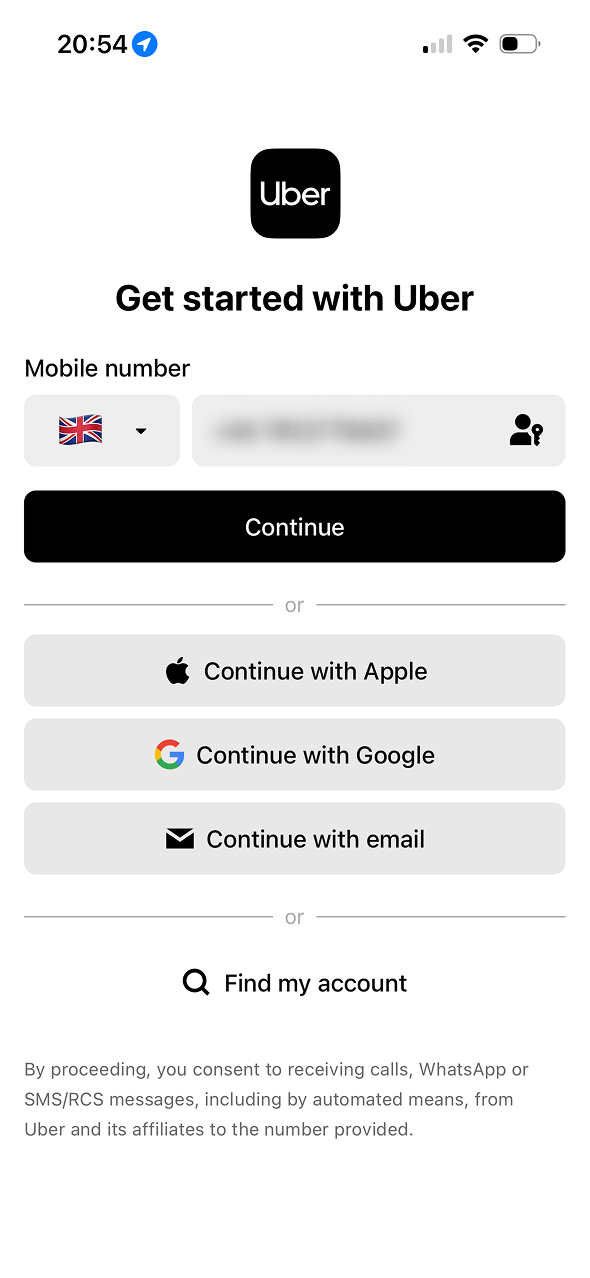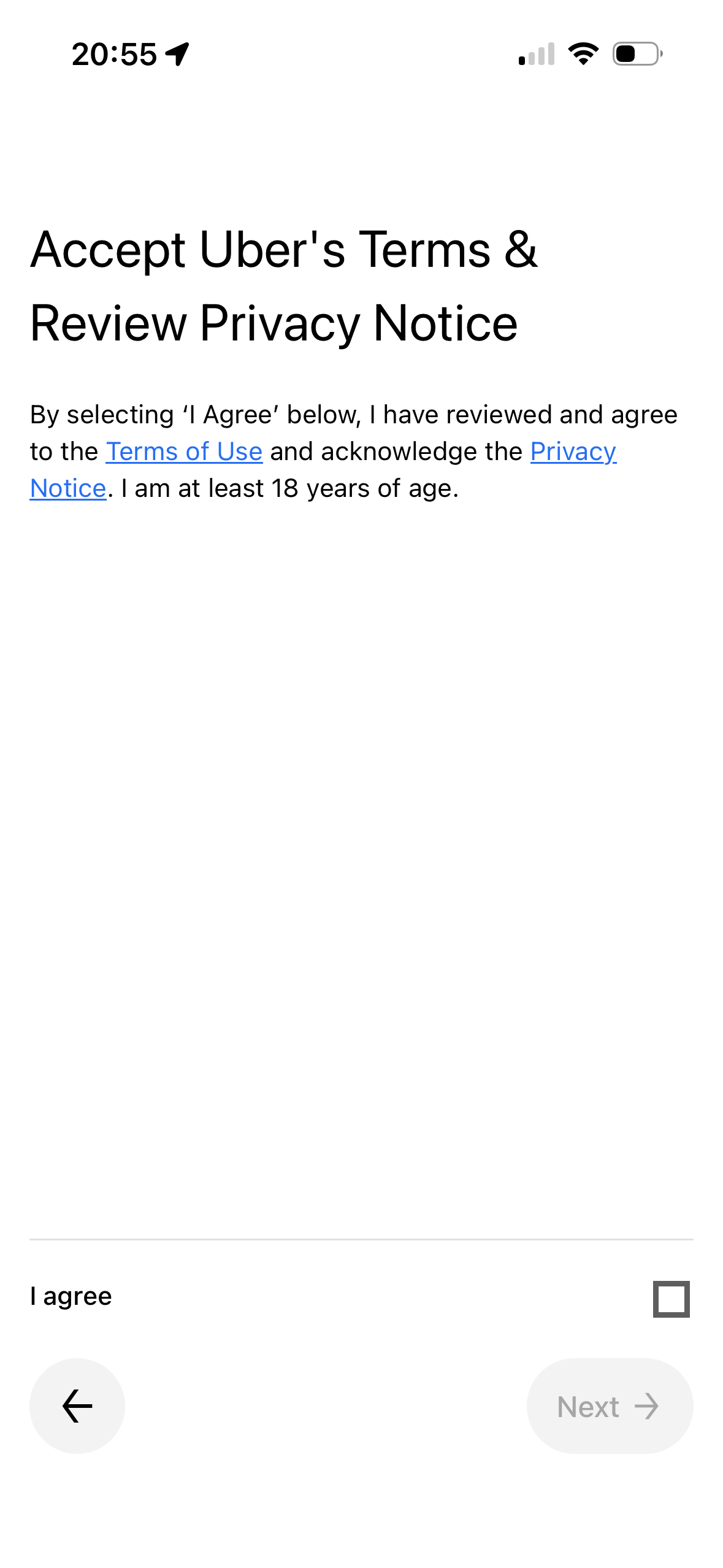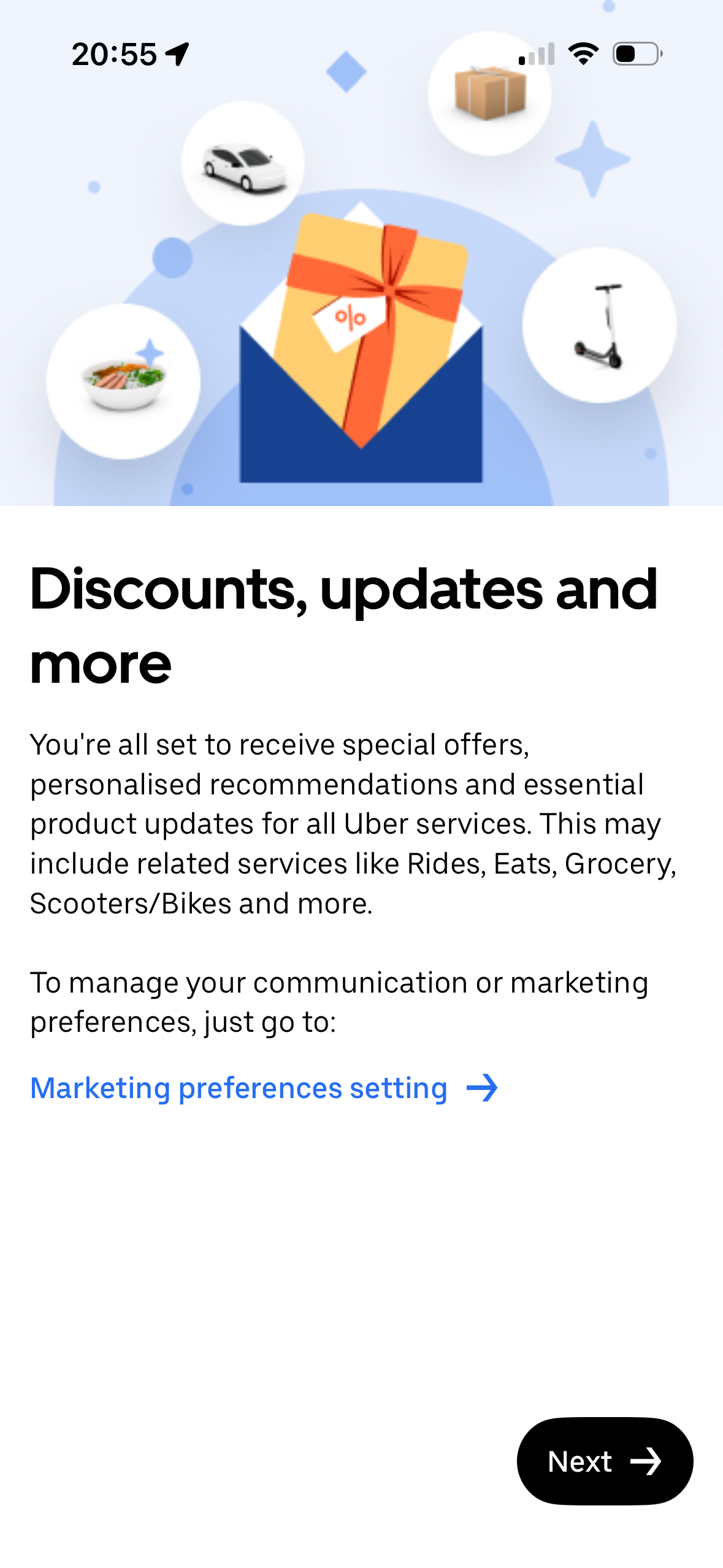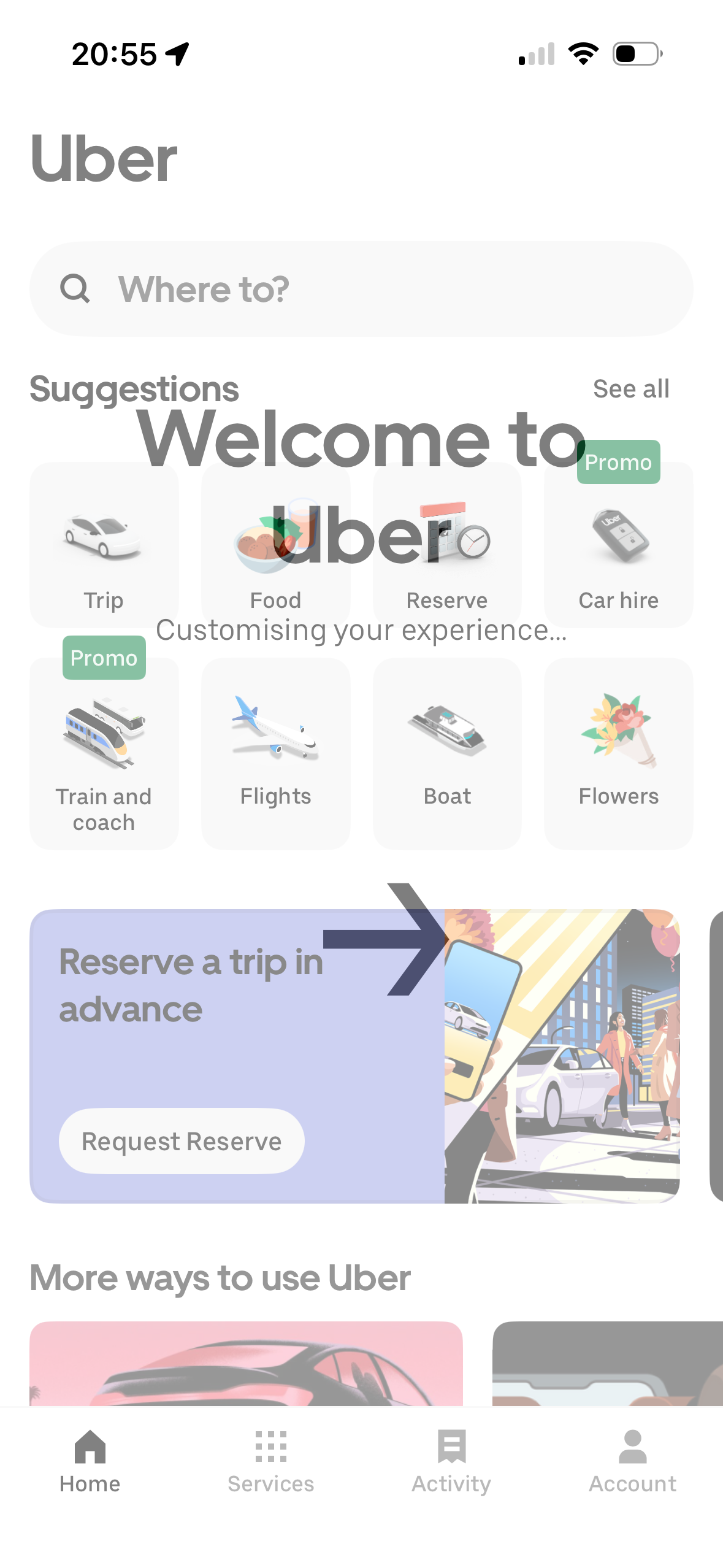.svg)

We analysed Uber’s onboarding flow to see how it uses behavioural psychology and it’s full of smart, subtle moves. From the way they frame “getting started” as something effortless, to how they nudge you toward sharing data without it feeling too intrusive, the whole experience is designed to feel smooth and trustworthy. There are trade-offs however. Some screens blur the line between clarity and compliance, and it left me wondering how informed some of those choices really are. This case study dives into where Uber gets it right, and where a few small changes could make a big difference.












